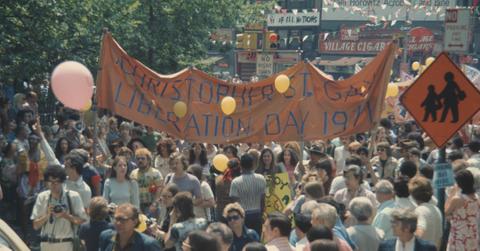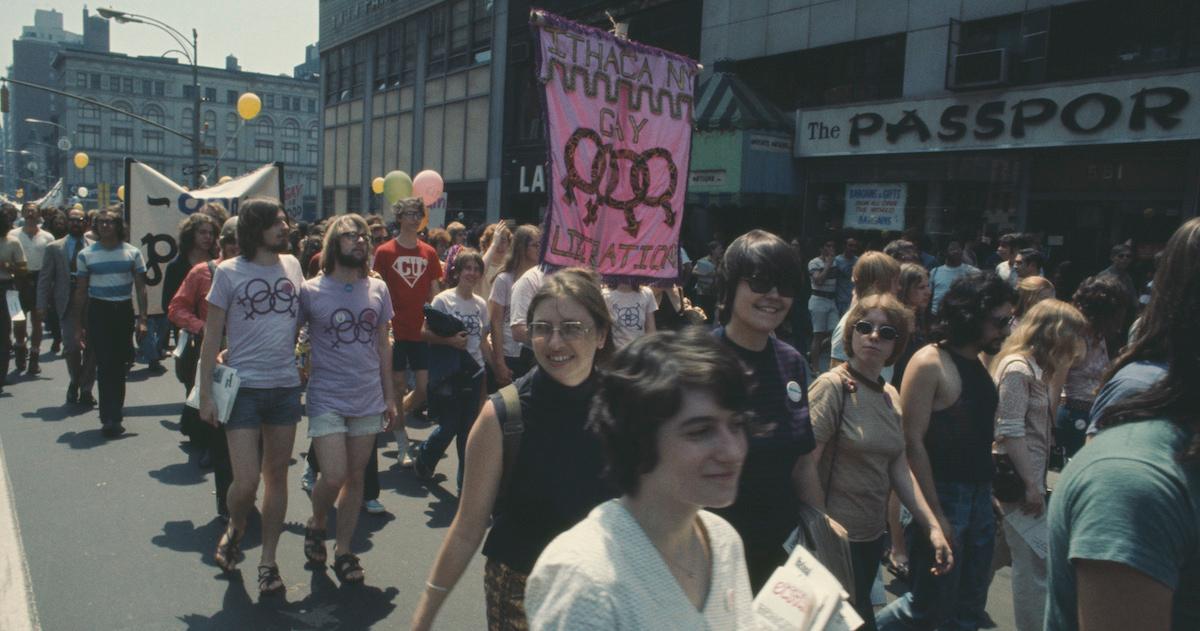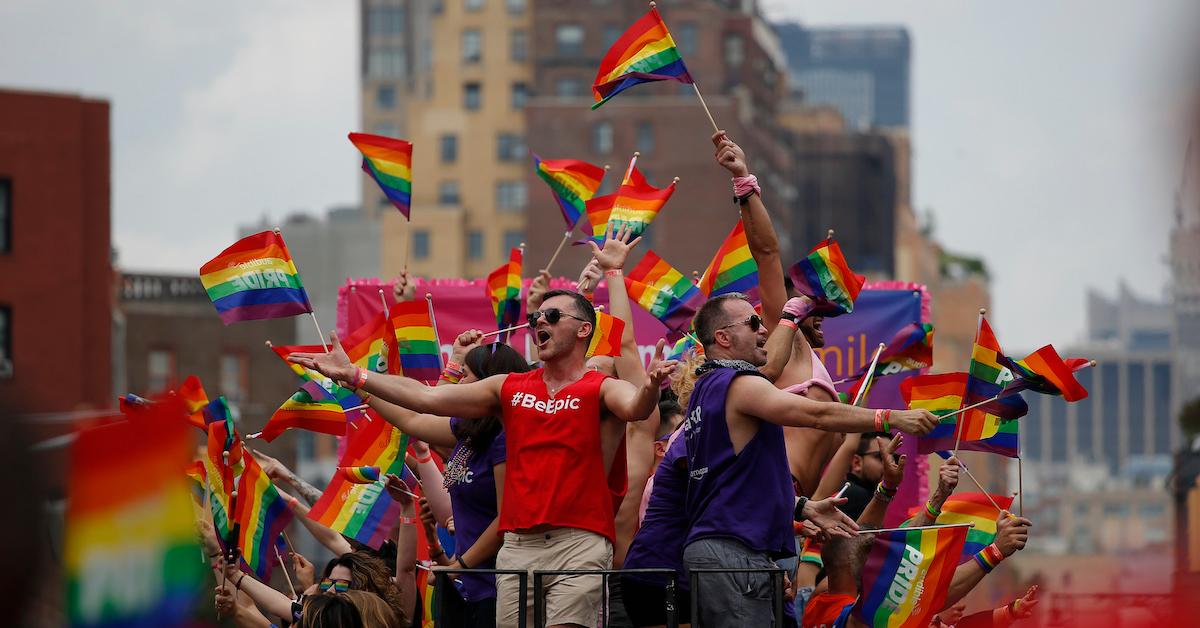10 Facts About Pride Month — and Why It's a Protest, Not a Party
Pride Month has been around since the 1960s.
Updated May 31 2024, 2:27 p.m. ET

An archival photo of an LGBT parade going through New York City on Christopher Street Gay Liberation Day 1971.
Throughout the month of June, people around the U.S. — and a number of other countries — celebrate Pride Month every year, in honor of the LGBTQ+ community, and in commemoration of an important historical event.
So in recognition of the holiday, we’re sharing 10 facts about Pride Month, from the history of the holiday to info on how to celebrate.
1. How did Pride Month begin? The holiday honors the 1969 Stonewall Uprising.

A banner reading “We Are Everywhere” at a Gay Pride march on Fifth Avenue in New York City, USA, July 1979.
According to the Library of Congress, Pride Month is celebrated in June to commemorate the 1969 Stonewall Uprising, aka the Stonewall Riots.
2. The Stonewall Riots were a six-day protest in Manhattan.
The Stonewall Riots began at around 2 a.m. on June 28, 1969, when police officers raided the Stonewall Inn, a gay bar on Christopher Street, in Manhattan’s Greenwich Village. According to History, it was common at the time for police to raid bars without liquor licenses — which, not coincidentally, were oftentimes gay bars, as New York’s liquor authority tended to reject liquor license applications from gay bars, as per NYCdata.
As cops began arresting several bar-goers that night, those who had evacuated decided they could no longer stay silent. They began protesting the cops actions from outside the bar; the police grew violent, and the raid soon became a riot between the police and NYC’s LGBTQ+ community, as explained by NYCdata.
This raid led to a six-day series of protests outside of the Stonewall Inn and throughout the Village.
3. The Stonewall Uprising helped launch the gay rights movement.
Many people view the Stonewall Riots and protests as the event that launched the gay rights movement.
4. For these reasons, activists see Pride as a protest, not a party.

An archival photo of an LGBT parade going through New York City on Christopher Street Gay Liberation Day 1971.
There is so much to celebrate during Pride Month, and Pride marches, festivals, and parties are a fantastic way to get into the spirit. That said, it’s important to remember that Pride was founded to commemorate the historical Stonewall Riots and the activists who risked their lives to lead these protests.
5. Marsha P. Johnson is known as a leader of the Stonewall Riots.
Transgender activist Marsha P. Johnson was one of the most prominent protestors “on the front lines” during the Stonewall Uprising, according to the New-York Historical Society. Though many believe she was involved in starting the riots, she has stated that was not the case — though the late activist is still rightfully regarded as one of the most instrumental leaders of the Stonewall Riots.
Johnson went on to work tirelessly to help homeless transgender youth and fight for the rights of LGBTQ+ people, and she was arrested over 100 times for her efforts.
6. The first Pride March was held on the anniversary of Stonewall.
On June 28, 1970, the first anniversary of the Stonewall Uprising, activists in New York City held the very first Christopher Street Liberation Day March, which is known today as the Pride March.
According to the Library of Congress, original fliers promoting the very first Pride March stated that the march aimed to "commemorate the Christopher Street Uprisings of last summer in which thousands of homosexuals went to the streets to demonstrate against centuries of abuse ... from government hostility to employment and housing discrimination, Mafia control of Gay bars, and anti-homosexual laws."
7. A decade later, Pride went national.

The annual Pride Parade on June 24, 2018 in New York City.
According to Heritage of Pride, on Oct. 13, 1979, the first National March on Washington for Lesbian and Gay Rights was held in Washington, D.C. This fell 10 years after the Stonewall Riots, and about a year after the assassination of gay politician Harvey Milk. This helped bring Pride celebrations and marches to the attention of people all across the U.S.
8. Now, Pride Marches are held around the world every June.
Since then, the Pride movement has grown every year, with more and more cities and countries around the world hosting their own Pride Marches throughout the month of June.
9. New York City’s 2024 Pride March will commemorate the 55th anniversary of the Stonewall Riots.
The organization Heritage of Pride, aka NYC Pride, organizes the city’s Pride March and other Pride events every year. The next Pride March will take place on Sunday, June 30, 2024, in commemoration of the 55th anniversary of the Stonewall Uprising.
To find out when your city’s Pride festivities are this year, check out IGLTA’s International LGBTQ+/Gay Pride Calendar.
10. Marriage equality laws have coincided with Pride on more than one occasion.
In June 2011, the night before Pride weekend, New York State voted to legalize same-sex marriage. Previously, Vermont, Connecticut, Massachusetts, Iowa, New Hampshire, and D.C. had legalized same-sex marriage.
Then, on June 27, 2015, just before the NYC Pride March, the U.S. Supreme Court made it legal for same-sex couples to marry across the country, making Pride celebrations extra joyful that year.
That said, Heritage of Pride notes that even though marriage equality is now legal in the U.S., there is still so much to fight for in terms of equal rights and protections for every member of the LGBTQ+ community. So as you wave your rainbow flag during Pride Month this year, make sure to take a moment to honor those who risked their lives to fight for equal rights. We recommend following these LGBTQ+ environmental activists, each of whom speak to the intersection between environmentalism and LGBTQ+ rights.
This article, originally published on May 31, 2022, has been updated to reflect Pride Month 2024.